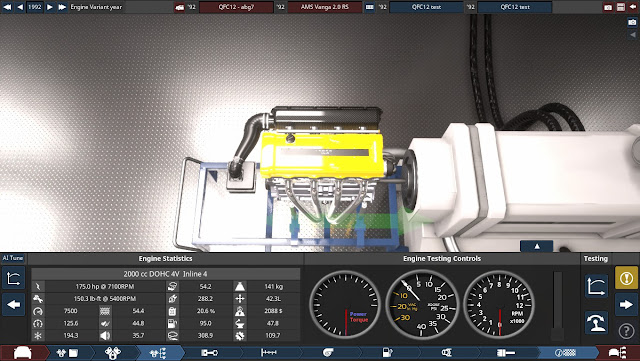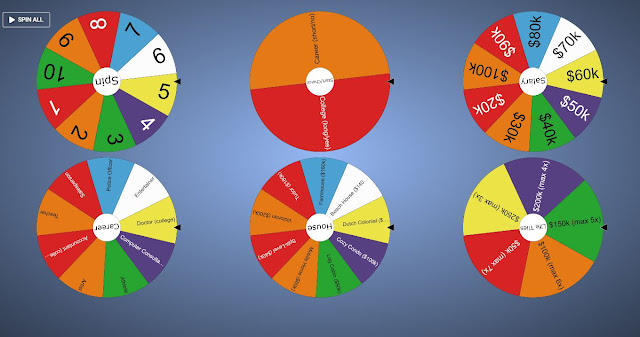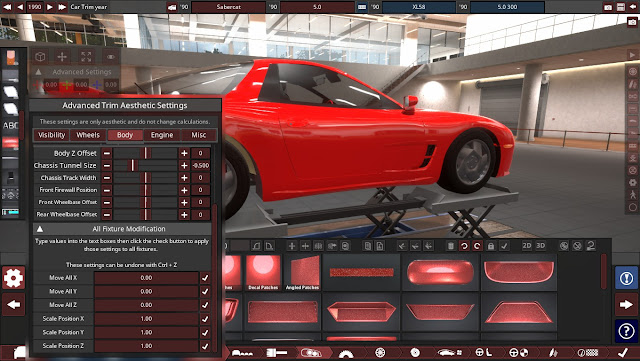Wanton Destruction on a Galactic Scale: When is it a Good Idea, and When is it Not?
I've already explained in earlier posts how you can obtain (and use) a Limited Vacuum Collapser more than once in Infinite Space III: Sea of Stars, but this time I'll show you why allowing a player to do so more than twice would not be a good idea. To give you an example, here are several screenshots from a recent game I completed.
A Limited Vacuum Collapser is not something to be used lightly - it must be set up so that it detonates at the right place and time - but it's sure to produce spectacular fireworks when it goes off.
In the game described here, I found a Limited Vacuum Collapser in the Duet star system, and I immediately headed to the Tchorak home system to find out if a Kawangi Dreadnought would visit it (or any other star system on the opposite side of the map from the Terran home system of Glory). My hunch turned out to be correct, so I decided to detonate the Collapser in the Viveka system (which was less than five light-years away from the Tchorak home system, and also close enough to Duet to ensure that both systems would also be caught in the blast). The resulting vacuum collapse not only erased both the Tchorak home system and the Kawangi dreadnought from existence, but also destroyed a Muktian flotilla that didn't evacuate in time. In addition, the destruction of the Duet system prevented me from exploiting the Kawangi respawn bug, but I didn't care.
Later on in the game, I discovered a Timeless Bauble, and decided to use it to create another Limited Vacuum Collapser. This time, I decided to detonate it in orbit around the black hole Monstro, after realizing that the Urluquai and Tan Ru home systems were less than five light-years away from it. Keeping this knowledge in mind, I retreated to a safe distance and watched the fireworks as two hostile factions - and three whole star systems - were wiped off the map along with any and all flotillas within the blast radius. Fortunately, my flotilla was not among them (if it were, the game would immediately end), but that made it impossible to trade in some cargo for a piece of advanced Urluquai technology (such as a Plasma Coil Cloaker) from then on. Again, though, I did not care one bit - the 5000 credit bonus for destroying a Kawangi Dreadnought was more than enough to field and heavily upgrade a fleet of two Terran Frigates, a Garthan Frigate, and a Calatian Cruiser. Besides, I had already purchased enough Cloakers to equip each and every one of my capital ships (i.e. anything larger than a fighter but is not a space station) with one of these devices.
Using a Limited Vacuum Collapser to destroy a home system (or, in rare circumstances, more than one of them) is not a good idea (especially if any of them is your own, or that of any faction that starts out neutral or allied), but if any the system(s) in question is/are those of an initially hostile faction, it may well be worth it - especially if their flotillas are also caught in the blast.
All told, I destroyed six star systems (including three alien home systems), one black hole, and four flotillas (of which one was comprised solely of a Kawangi Dreadnought) in this game. It is worth noting that in Sea of Stars' predecessor, Weird Worlds, using a Limited Vacuum Collapser is treated in-universe as a last resort, since such acts of wanton destruction would have incurred a 1000-point penalty apiece at the end of the game, but for some reason, this rule no longer applies in Sea of Stars.
This brings us to the topic of this post: What if you could detonate a Limited Vacuum Collapser more than twice in the same game? Well, for starters, it would not be a good idea: every randomly generated map in Sea of Stars initially contains 32 star systems and 5 black holes, and since an LVC detonation is guaranteed to permanently remove at least one of the former from the map (although depending on where the epicenter is, such a cataclysmic event could destroy more star systems at once, in some cases up to five or even six), a double LVC explosion will reduce the number of systems to 30 at most. Taking the game described above as an example, I erased three systems from the map with each use of the LVC (6 in total), leaving 26 systems still on the map, and there was a huge void of empty space where those annihilated systems used to be. Worse yet, if each detonation had destroyed six systems each instead of three, there would have been only 20 stars left on the map.
Taking the idea further, giving a player an infinite supply of Limited Vacuum Collapsers would make it possible for them to destroy the entire sector (or at least annihilate every star system that isn't Glory) which would make the game unwinnable. Even with one LVC "explosion", you're looking at up to just under a quarter of the sector gone in a flash - and with two detonations, up to a little over a third of the map's star systems will be lost forever in total. Moreover, if you haven't explored any or all those systems before they disappeared from the sector map due to the vacuum collapse, you will never be able to do so for the rest of the session, which may make the game harder (or even impossible) to complete depending on what was spawned there at the start, and even if it doesn't, it reduces the number of star systems you can explore, which will reduce your final score, of which exploration contributes a significant amount.
And what if the Limited Vacuum Collapser's area of effect were changed in size? Consider what would happen if an LVC wiped out a larger part of the map with each blast. For example, if the blast radius of an LVC were to be doubled in size (to 10 light-years instead of the usual five), you'd erase much more of the sector with each detonation, and have far more difficulty escaping from the blast zone - as well as placing your own system (Glory) at greater risk of destruction each time. On the other hand, reducing the blast radius, say to three light-years, would make the LVC more of a precision weapon, with no chance of collateral damage (since all star systems on the map must be at least three light-years apart from each other), by completely removing its ability to destroy any star system other than the one in which it was detonated. This, however, would also create at least as many problems as it could potentially solve, such as having to be far more precise with the location and timing of the blast to take out an invading Kawangi dreadnought, so in general, changing the blast radius of an LVC would not be a good idea.
Overall, it's a good thing that none of the games in the Infinite Space trilogy will allow you to cause more than two localized vacuum collapses (with a blast radius of five light-years each) in the same session. The series as a whole was (and still is) mainly about exploring distant star systems, not destroying them; as such, excessive wanton destruction would largely defeat the whole point of the game. To ram the point home, the Limited Vacuum Collapser and Timeless Bauble (the latter of which may be used to create another LVC) do not always spawn on the map when starting a game, and if the former is present, its use is not always required to actually complete the game; in Sea of Stars, you may even sell it at Glory for 1000 credits if you're short on cash. So while it's great to know that you can annihilate an entire star system (or several of them) at the push of a button, you'll be glad that doing so isn't necessary for complete mastery over the Sea of Stars.






























